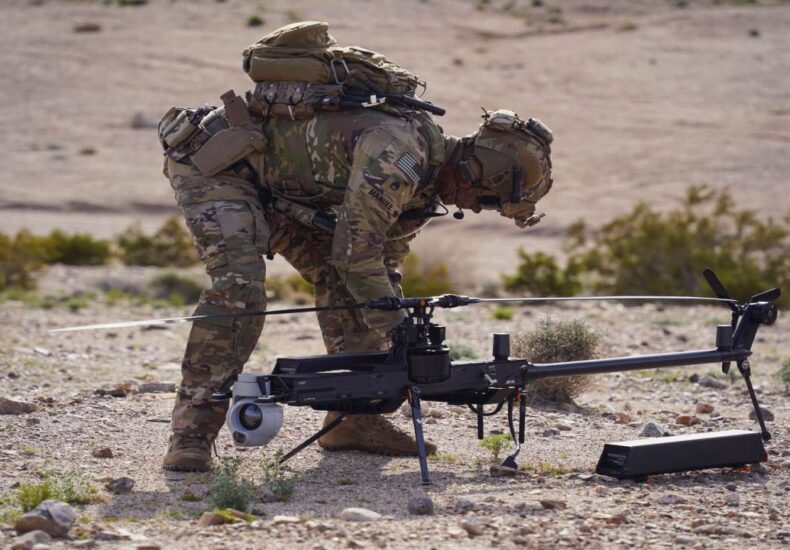
Drones and the Next Frontline: How Unmanned Weapons Are Quietly Rewriting Modern War
Fundacion Rapala – War has always been chaotic, yet drones have pushed that chaos into a new, unsettling form. These machines now hover over trenches, roads, and cities, reshaping how battles unfold. Cheap to build and easy to operate, they offer armies a tool that reduces risk while increasing reach. Soldiers watch the skies constantly because danger can come from a tiny buzzing speck that slips through a window or drops from the clouds without warning. Military planners see drones as efficient and adaptable. Civilians near the front see them as a permanent threat. Their presence changes the emotional landscape of war, adding a layer of fear that follows people everywhere. This shift shows how technology, even when simple, can alter conflict in ways far deeper than expected.
From Experimental Tools to Essential Weapons of War
Drones were once experimental devices flown in controlled environments far from combat. They slowly moved from basic reconnaissance tools to platforms capable of launching precise attacks. Over the years, their role expanded as militaries adapted commercial technology for the battlefield. Small quadcopters became scouts. Larger drones evolved into strike weapons. The mix of hobbyist equipment and military engineering blurred old lines between professional armies and everyday consumers. Anyone with the right parts and training could build something useful in combat. This trend has pushed warfare into a new phase where innovation is fast, cheap, and accessible. What used to require large budgets and advanced factories can now emerge from small workshops or volunteer groups working with limited resources.
“Read More : Trump maduro designation a Terror Affiliate: A Turning Point in US Venezuela Tensions”
Ukraine’s Drone Revolution and the Power of the Underdog
Ukraine has shown the world how powerful drones can be when a country faces overwhelming odds. Operators guide small FPV drones through trenches and across fields, turning them into guided weapons with remarkable precision. Sea drones hit ships in the Black Sea. Long-range models strike aircraft on Russian airfields far from the frontline. Behind every mission stands a network of volunteers and engineers who redesign and rebuild drones as fast as the enemy adapts. Their creativity has played a critical role in slowing Russia’s advance. Many soldiers say drones are the eyes and hands of the battlefield, giving them a chance to fight back even when outgunned. Ukraine’s approach has become a model for how underdogs can use technology to level the field.
Innovation at the Front: Fast Cycles, Cheap Tech, and AI in the Loop
Drone innovation in Ukraine moves at a pace rarely seen in modern warfare. Designs change every few weeks as soldiers report what works and what fails. Workshops close to the front adjust antennas, cameras, and software based on immediate battlefield needs. Small changes in frequency or flight patterns can determine whether a drone survives enemy jamming. Artificial intelligence supports these upgrades. It helps stabilize drones in wind, identify shapes, and guide flight paths when communication weakens. People still make the final decision to strike, but machines help fill the gaps between detection and action. This rapid cycle of learning and adapting turns the battlefield into a live testing ground where ideas move from sketch to deployment faster than in traditional military programs.
From State Armies to Militias, Cartels, and Rebels
Drones have spread far beyond national militaries. Armed groups, militias, and criminal cartels now use them to gain power they once lacked. In parts of Africa, governments use drones to monitor remote regions where soldiers cannot easily reach. Insurgents in Myanmar have used commercial drones to attack bases for days at a time. Cartels experiment with explosive drones to target rivals and security forces. Even small groups can disrupt larger, better-equipped forces by flying cheap devices packed with explosives. This shift shows how technology changes who can fight and how. Airpower was once limited to wealthy nations. Today, a small group with technical skills can build a fleet of unmanned aircraft that can scout, strike, and intimidate.
Smaller, Smarter, Deadlier: The New Drone Ecosystem
Drone development is moving in two directions at once. Some drones are shrinking to sizes barely larger than insects, making them perfect for indoor surveillance. Others are growing into large unmanned ships or underwater vehicles capable of long-range missions without human crews. AI-powered software can turn standard drones into strike systems that navigate and attack even when jammed. New defense companies, often run like technology start-ups, compete to build smarter drones and better countermeasures. Meanwhile, countries like China invest heavily in anti-drone systems such as microwave weapons and large-scale jamming networks. The result is a rapidly expanding ecosystem where every new advance triggers an immediate response from those trying to defend against it.